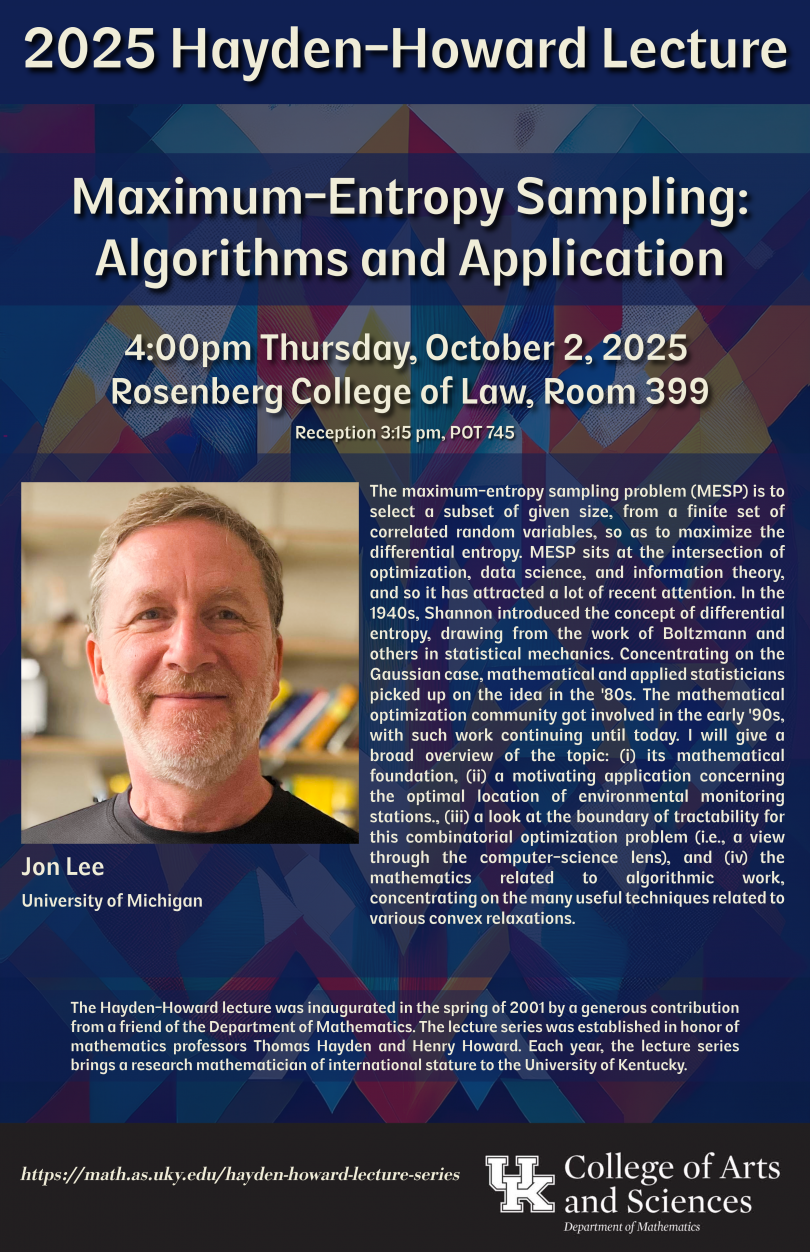2025 Hayden-Howard Lecture
2025 Hayden-Howard Lecture: Maximum-Entropy Sampling: Algorithms and Applications

Speaker: Jon Lee, University of Michigan
Abstract: The maximum-entropy sampling problem (MESP) is to select a subset of given size, from a finite set of correlated random variables, so as to maximize the differential entropy. MESP sits at the intersection of optimization, data science, and information theory, and so it has attracted a lot of recent attention. In the 1940s, Shannon introduced the concept of differential entropy, drawing from the work of Boltzmann and others in statistical mechanics. Concentrating on the Gaussian case, mathematical and applied statisticians picked up on the idea in the '80s. The mathematical-optimization community got involved in the early '90s, with such work continuing until today. I will give a broad overview of the topic: (i) its mathematical foundation, (ii) a motivating application concerning the optimal location of environmental-monitoring stations., (iii) a look at the boundary of tractability for this combinatorial-optimization problem (i.e., a view through the computer-science lens), and (iv) the mathematics related to algorithmic work, concentrating on the many useful techniques related to various convex relaxations.
The Hayden-Howard lecture was inaugurated in the spring of 2001 by a generous contribution from a friend of the Department of Mathematics. The lecture series was established in honor of mathematics professors Thomas Hayden and Henry Howard. Each year, the lecture series brings a research mathematician of international stature to the University of Kentucky.
2025-2026 Hayden Howard Lecture
